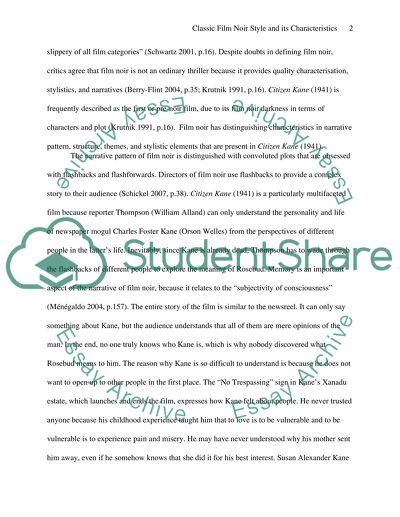Cite this document
(“Classic Film Noir Style and its Characteristics: Moral Uncertainty, Essay”, n.d.)
Retrieved from https://studentshare.org/visual-arts-film-studies/1455748-classic-film-noir-style-and-its-characteristics-moral-uncertainty-complex-camera-shots-and-scenes-and-chiaroscuro-lighting-in-citizen-kane-1941
Retrieved from https://studentshare.org/visual-arts-film-studies/1455748-classic-film-noir-style-and-its-characteristics-moral-uncertainty-complex-camera-shots-and-scenes-and-chiaroscuro-lighting-in-citizen-kane-1941
(Classic Film Noir Style and Its Characteristics: Moral Uncertainty, Essay)
https://studentshare.org/visual-arts-film-studies/1455748-classic-film-noir-style-and-its-characteristics-moral-uncertainty-complex-camera-shots-and-scenes-and-chiaroscuro-lighting-in-citizen-kane-1941.
https://studentshare.org/visual-arts-film-studies/1455748-classic-film-noir-style-and-its-characteristics-moral-uncertainty-complex-camera-shots-and-scenes-and-chiaroscuro-lighting-in-citizen-kane-1941.
“Classic Film Noir Style and Its Characteristics: Moral Uncertainty, Essay”, n.d. https://studentshare.org/visual-arts-film-studies/1455748-classic-film-noir-style-and-its-characteristics-moral-uncertainty-complex-camera-shots-and-scenes-and-chiaroscuro-lighting-in-citizen-kane-1941.


